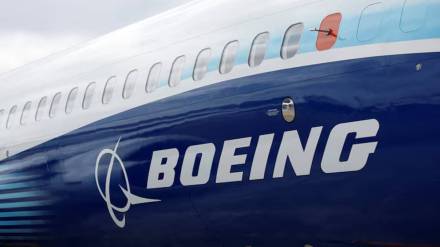In a perilous move, Boeing has withdrawn its pay proposal for around 33,000 U.S. factory workers, intensifying a labour strike now entering its fourth week. The failure of talks with union representatives—alongside a financial landscape edging closer to a credit downgrade—places Boeing at a crossroads. Instead of compromise, Boeing’s latest steps signal a commitment to austerity, despite mounting risks to its investment-grade credit rating.
The negotiations, involving federal mediators, ended in a bitter stalemate, leaving Boeing’s factories producing critical models like the 737 MAX and 777 idling. The union, representing a workforce seeking a 40% wage increase over four years and the reinstatement of a defined-benefit pension, stands in stark opposition to Boeing’s “best and final” offer of a 30% pay rise. Boeing Commercial Airplanes head Stephanie Pope criticised the union’s demands as “non-negotiable,” stating further talks were futile. Yet, with over 90% of union members having previously rejected a lesser offer of 25%, the company’s current stance has only intensified worker discontent and the broader reputational damage.
This labour tension coincides with Boeing’s escalating financial strain. The aerospace behemoth faces a critical need to raise cash—estimates suggest between $10 billion and $15 billion—to maintain its credit rating, which teeters on the brink of junk status. Boeing is exploring funding through hybrid bonds and potential preferred equity sales, hoping to avoid further erosion of investor confidence. Financial experts, however, voice doubts about Boeing’s strategy, suggesting common equity issuance as more beneficial for credit stability. Boeing has also introduced temporary furloughs for thousands of salaried employees as it seeks to preserve cash, an austerity measure indicative of the severity of its position.
Yet these financial manoeuvres may not be enough to placate rating agencies. Moody’s, with Boeing’s rating currently at Baa3, recently indicated a downgrade would occur if Boeing’s capital raise were deemed insufficient, particularly as the strike drags on. CreditSights analyst Matt Woodruff echoed the urgency, calculating that Boeing needs to secure at least $12 billion to stave off junk status, given debt commitments reaching $16 billion in the coming years. Should the company slip into junk territory, Boeing’s borrowing costs will rise substantially, further pressuring a balance sheet already strained by legacy issues and deferred production.
Amidst this storm, Boeing’s management appears committed to preserving liquidity and safeguarding its rating. Nonetheless, the unfolding clash with its workers highlights a challenging paradox. Boeing’s workforce—the very hands that assemble its flagship aircraft—remains locked out of negotiations, and its call for a return to defined benefits reflects a ten-year legacy of eroding employee trust. In an industry where skill and morale are paramount, Boeing’s rigid approach risks weakening both.
The reputational stakes are high. With demand for new aircraft set to rebound, Boeing needs operational resilience to seize post-pandemic opportunities. But as it eyes capital raises and keeps its credit rating under review, Boeing’s predicament resembles that of a once-strong enterprise strained by short-term austerity and entrenched labour grievances. If Boeing fails to strike a balance, it risks a downturn in both market confidence and workforce solidarity.
For now, Boeing’s path forward is uncertain, and its handling of this crisis will likely define its future. Without an urgent course correction, the company may face not only financial turbulence but the gradual erosion of its reputation as an icon of American engineering.
